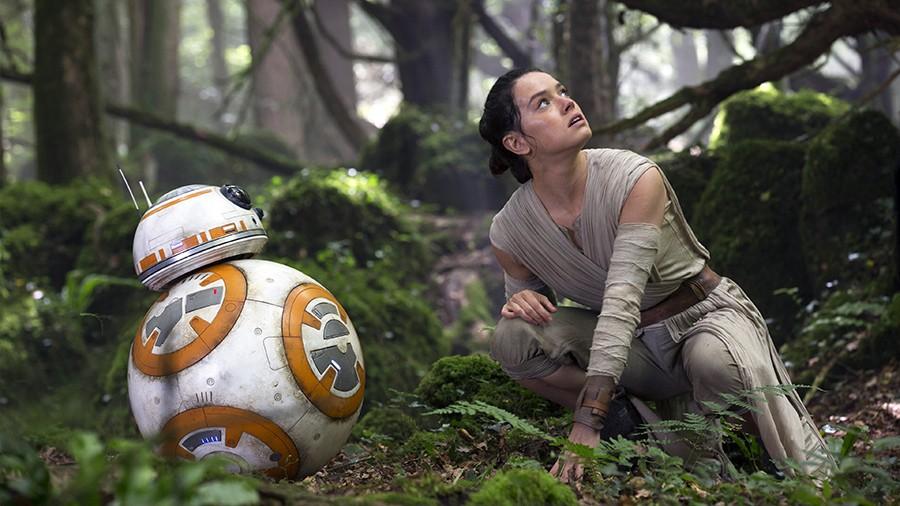No Jar Jar Binks in “The Force Awakens”
“Star Wars” is kind of a big deal.
When “Episode IV: A New Hope” was released in 1977, the world was forever changed. It became a cultural touchstone that the science fiction movie industry has been living up to in the decades since, and the sheer amount of action figures and toy lightsabers sold to desperate parents at Christmas-time could probably bury the state of Texas.
The idea of new additions to this beloved franchise was a source of much debate, especially after the nearly-universal opinion that the last attempt didn’t go so well. (Here’s looking at you, “Phantom Menace.”) However, writer and director J.J. Abrams (“Lost,” “Star Trek,” “Fringe”) has done justice to the original films with “Episode VII: The Force Awakens.”
I wasn’t yet alive when the original films came out, but when the first chords of the innately familiar theme song burst into life and that iconic bright yellow text began to scroll across the screen, I immediately felt a sense of nostalgia and excitement. The film that followed did not disappoint, its 2 hour, 15 minute runtime blending the new with the old in a timeless story of unexpected adventure and heroism.
The film opens in a manner that will be familiar to many fans of the series, paralleling the opening shot of “A New Hope” and making it immediately clear that it will paying great homage to its source material.
The chemistry between Rey (Daisy Ridley) and Finn (John Boyega) carries much of the film. Their interactions range from amusingly sharp banter to a heartwarming friendship that grows throughout the film. Alongside it all, the expressive droid BB-8 zooms and bobs with the energy and personality that we’ve come to love from the droids of the Star Wars universe.
A noticeable aspect of the film is how entirely unnoticeable its use of gender and race is. Considering that one of its leads is a woman and the other a black man — both significant minorities in the film industry — I found it pleasantly surprising that neither one of these things is so much as mentioned. Both characters are given unique, interesting, and natural story arcs, with no feeling that they are either falling into or being corralled away from stereotypes. In a time of frequent overcompensation for such things, this film is a refreshing change.
With old favorites like Han Solo (Harrison Ford) and Chewbacca (Peter Mayhew) making their returns, it wouldn’t have been too surprising to see the film’s leads get pushed aside in favor of fanservice. Happily, such a thing did not happen. Abrams balanced the screen-time effectively and gave everyone a chance to show their qualities.
Although I initially found Kylo Ren (Adam Driver) to be an underwhelming and underdeveloped villain, perhaps due in part to his majestically coifed hair, his unpredictable bursts of outrage and impressive baritone cause plenty of intimidation when the plot calls for it. Additionally, his character offers the series a new look at villainy and what the Dark Side of the Force can represent.
Among fans, it has been said that the movie follows the plot of “A New Hope” too closely, paralleling many of the events and cinematography that occurred in the original. Conversely, however, the movie is in many ways an homage to the original. Its use of similar plot devices helps to maintain its connection to the established universe, while still bringing in new elements.
By utilizing the best aspects of both the old films and modern filmmaking, the movie is able to look new while still feeling like it belongs in the universe of the older series. To compare, the trilogy of the early 2000s used a fair amount of flashy CGI in an attempt to modernize. “The Force Awakens” deftly avoids such embarrassment, sticking with simple updated versions of the effects that made much of the original trilogy so iconic. In other words, there is no Jar Jar Binks in this movie.
There is also no character who serves as the sole comic relief. That’s not to say that the film isn’t funny, however; there are quite a few moments that are brilliantly comedic. The humor is woven into the plot well, and utilizes the characters already-established traits rather than attempting to throw it all onto one character. It’s worth repeating that there is no Jar Jar Binks in this movie.
The score, written by returning composer John Williams, is mostly unremarkable. It keeps with the spirit of the original trilogy’s soundtrack, but uses the same themes for its larger moments. While it was definitely important to bring back those familiar strains, it would have been nice to hear at least one other track that had some musical hutzpah.
Overall, the film is absolutely worth watching at least once — twice for some, probably many more for some others. Whether you’re a hardened “Star Wars” fan or a newcomer to the franchise, there’s something to enjoy. It wouldn’t necessarily stand on its own as a film, but then, it is a sequel. In that respect, it holds up very well and is a promising start to a new excursion into that galaxy far, far away.






